The Artists of the Harlem Renaissance, in Print and Plaster
The landmark exhibition The Harlem Renaissance and Transatlantic Modernism at the Met here in New York has brought deserved new attention to the visual art achievements of the Harlem Renaissance artists. Many of these great artists have not yet been incorporated into the canon of either modern or American Art. The African American Art department at Swann Galleries has been bringing significant artworks of the Harlem Renaissance to auction since our first sale in 2007 at Swann Galleries. Our auctions have included paintings, works on paper, prints, photographs and sculpture by many luminaries of the period, including Richmond Barthé, Aaron Douglas, Meta Vaux Warrick Fuller, Palmer Hayden, Malvin Gray Johnson, Sargent Johnson, William H. Johnson, James A. Porter, Nancy Elizabeth Prophet, Augusta Savage, James VanDerZee, Laura Wheeler Waring and James Lesesne Wells. Many works of these works are now located in institutional collections. A small group of artworks in our April 4th sale highlight the printmaking of Aaron Douglas and James Lesesne Wells, and the sculpture of Augusta Savage.
Aaron Douglas
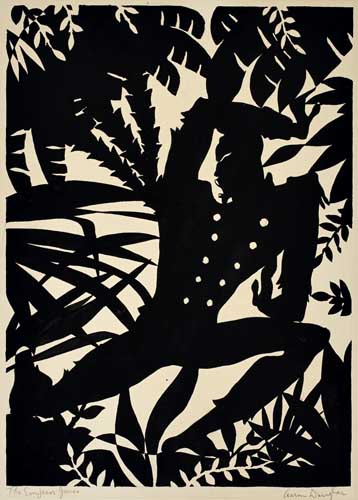
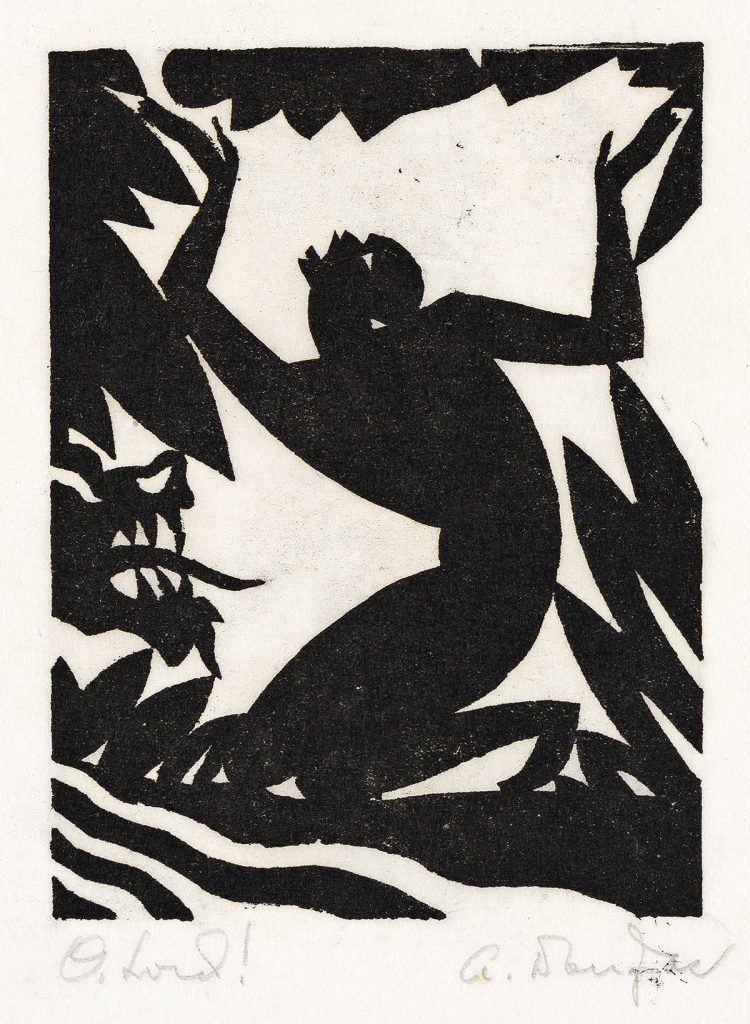
Aaron Douglas’s elegant drawings and prints epitomize the aesthetics of the Harlem Renaissance. Douglas incorporated modernist design with African and African American imagery—an approach of looking outside of academic European traditions espoused by the great philosopher Alain Locke. Another leading intellectual of the Harlem Renaissance, Charles Spurgeon Johnson, editor of the journal Opportunity, actively recruited the talented, young Douglas to leave his high school teaching position in Kansas to come to Harlem in 1925. Douglas soon began to receive many commissions for book covers and illustrations, including from the leading Black literary journals Opportunity and Crisis. He was commissioned by Theatre Arts Monthly in 1926 to design a series of woodblock to illustrate the play The Emporer Jones by Eugene O’Neill. The gouache study on the left was one of Douglas’s original designs for that series. The woodcut print on the right comes from a different series he produced to illustrate Emporer Jones—this was published in Plays of Negro Life: A Sourcebook of Native American Drama, edited by Alain Locke in 1927.
James Lesesne Wells
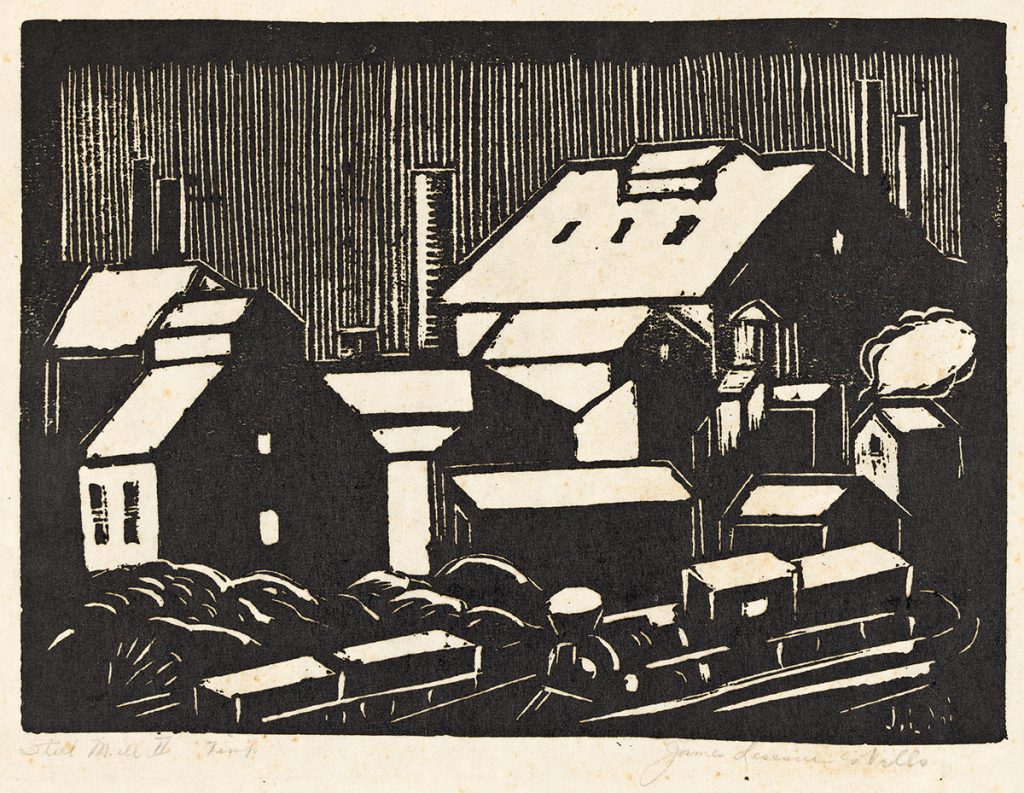
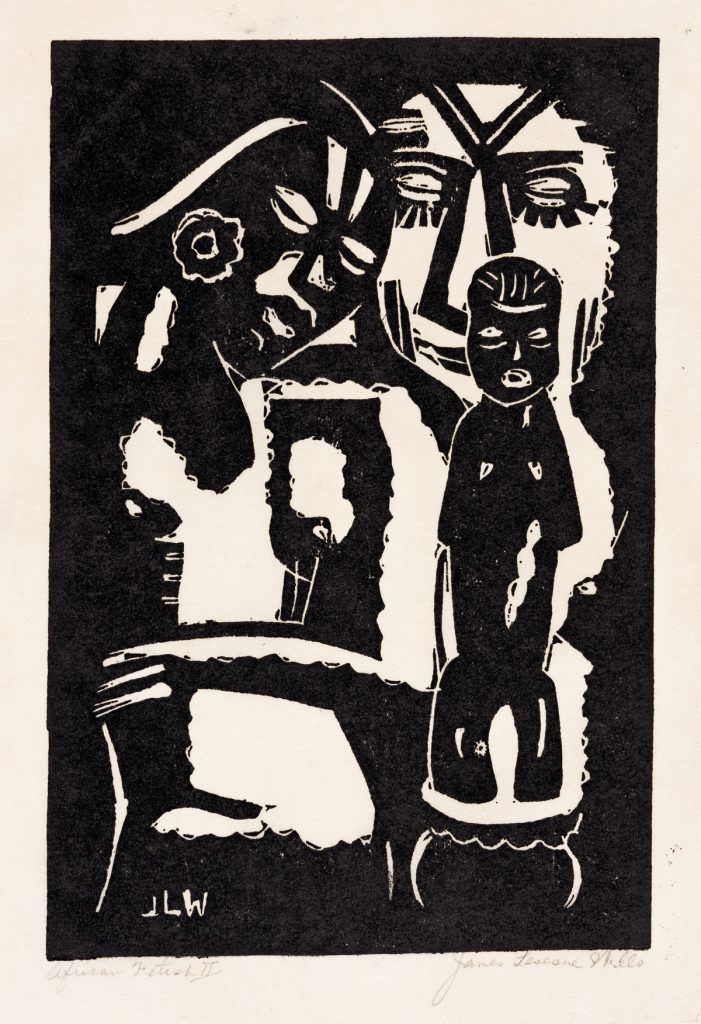
Left: James Lesesne Wells, African Fetish II (African Family), linoleum cut, circa 1929. Sold December 202 for $12,500.
Another great printmaker from the Harlem Renaissance is James Lesesne Wells. As seen in African Fetish II, Wells, like Douglas, also interpreted African sculpture in his late 1920s prints. Wells’s early career as a printmaker is characterized by his mastery of linoleum block printing. In addition, many of Wells’s block prints portray the everyday experience of working African Americans in bold, graphic compositions. Steel Mill II, an image of the Lackawanna steel mills, shows the modernist side of Wells—popularizing subjects of workers well before the WPA era. Like Douglas, Wells’s artwork was also published in The Crisis and Opportunity, as well as in publications by writers Alain Locke, Marianne Moore, Willis Richardson and Carter Woodson.
Augusta Savage
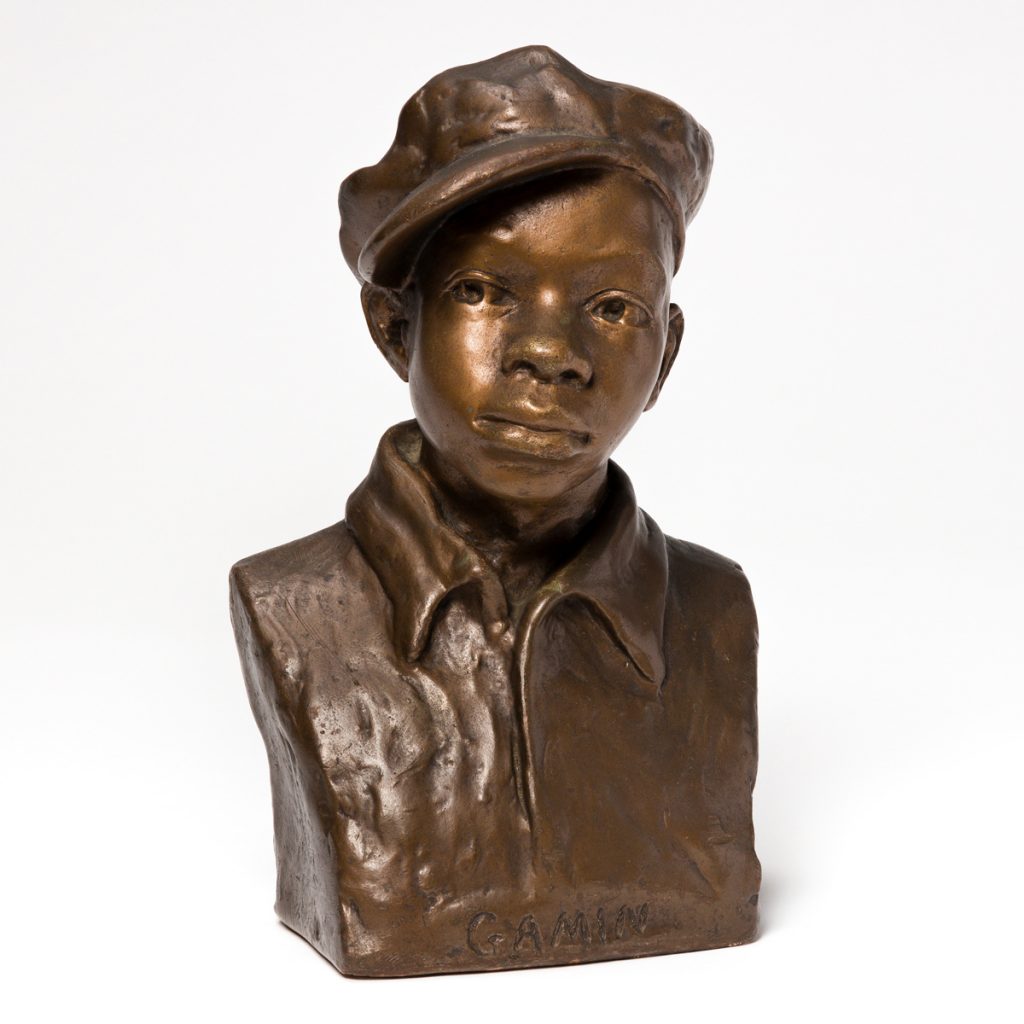
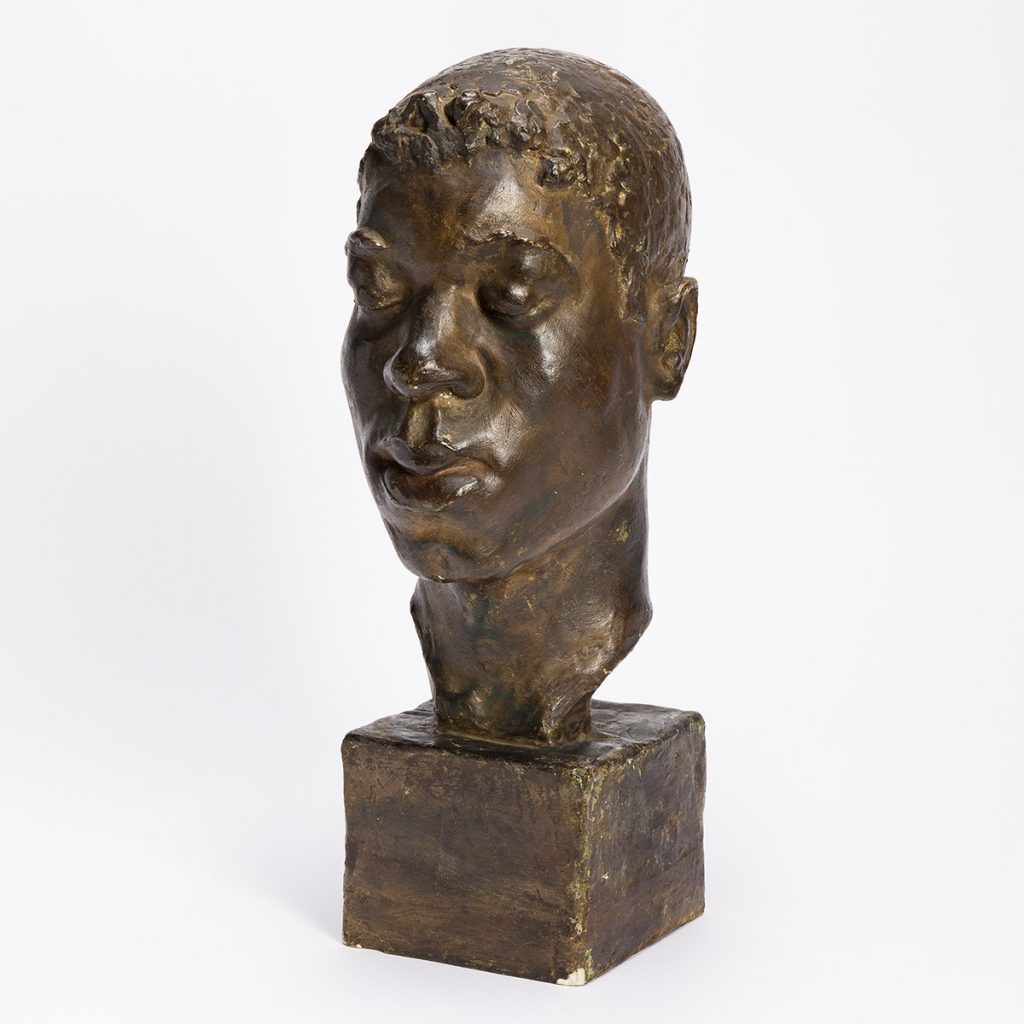
Sculptor Augusta Savage’s Gamin is an iconic image of the Harlem Renaissance. Savage is acclaimed for her naturalist approach to portraiture, particularly of young people, which greatly elevated the representation of African Americans. This smaller painted plaster version was made after the original life-size plaster and bronze—featured in the Met exhibition. Gamin was a turning point in sculptor Savage’s career at the end of the 1920s. The sculpture helped Savage win the first Rosenwald Fund fellowship in May of 1929, and Gamin was illustrated on the cover of the June issue of the magazine Opportunity that year. The untitled beautiful bust of a young man on the right is very scarce – it is the only life-sized head in plaster by the Harlem Renaissance sculptor to come to auction. Few large works in plaster by Augusta Savage are known to survive today. The modeling and finish of this head suggest this was completed after Savage’s trip to Paris in the early 1930s in her Harlem studio school. This handsome head demonstrates her skill in portraiture and her classical training in figurative modeling.
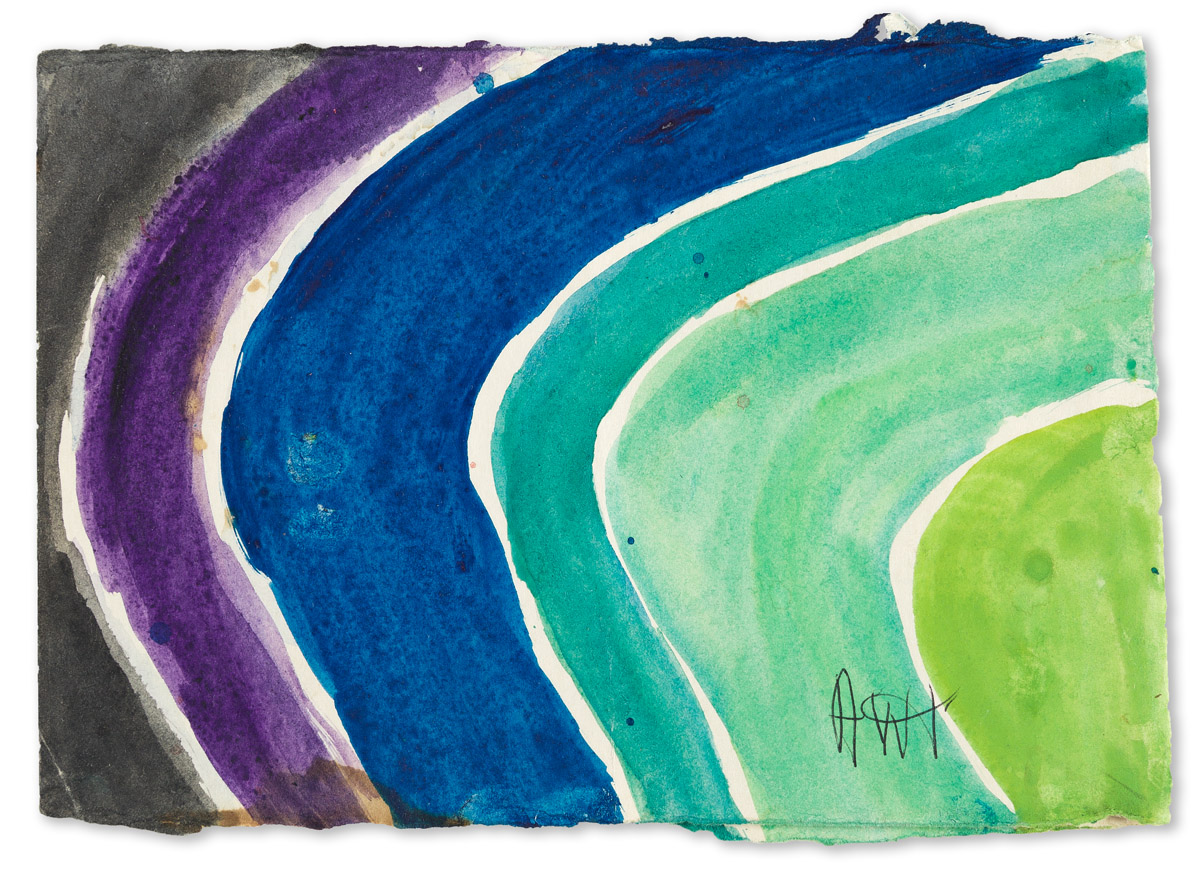
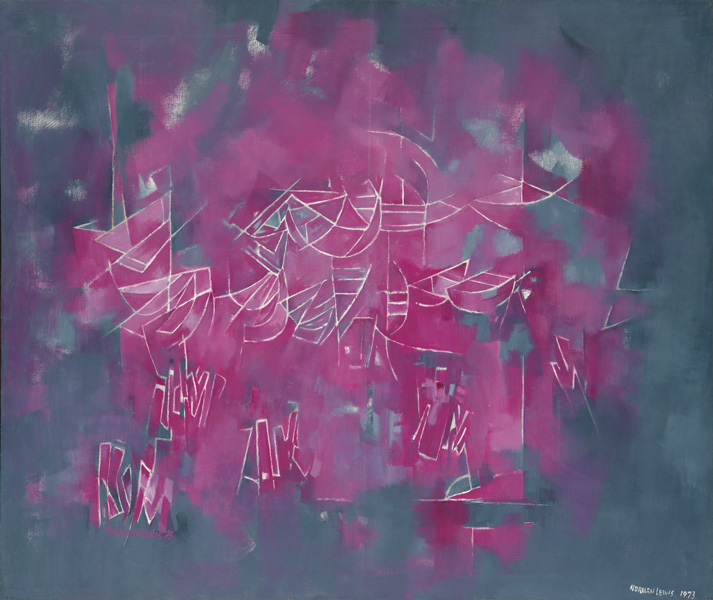






![Grace Meschery-McCormack shares about two copies of Fernando de Rojas’s ‘La Célestine,’ including a limited edition copy illustrated by Pablo Picasso.
At auction April 22. Learn more about the works at the link in our bio.
#Rarebooks #rarebookdealer #antiquarianbooks #auctions
_______________________________________
Music Credit:
Schubert - Piano Quintet in A major ‘The Trout’, D. 667 - IV. Andantino – Allegretto
Music provided by Classical Music Copyright Free on Youtube [https://tinyurl.com/visit-cmcf]
Watch: • Schubert - Piano Quintet in A major ‘...]](https://scontent-iad3-1.cdninstagram.com/v/t51.75761-15/491443494_18499096345036585_5935932878956098058_n.jpg?stp=dst-jpg_e35_tt6&_nc_cat=107&ccb=1-7&_nc_sid=18de74&_nc_ohc=m-4Ir9scQRgQ7kNvwF0EC_d&_nc_oc=Adk6vWHvJMH5TK67zw75jTpjO3KqV6u2qJzpfUwC4bmSaYLGiSmw5xfkUuplusJ5mI8&_nc_zt=23&_nc_ht=scontent-iad3-1.cdninstagram.com&edm=AM6HXa8EAAAA&_nc_gid=sh2dz65Krik12HDto7qYsA&oh=00_AfGDXGVC52I1qrum2bk-qwQlvAmSB7a8DH0UR4j2eL4KtQ&oe=680B14D1)









